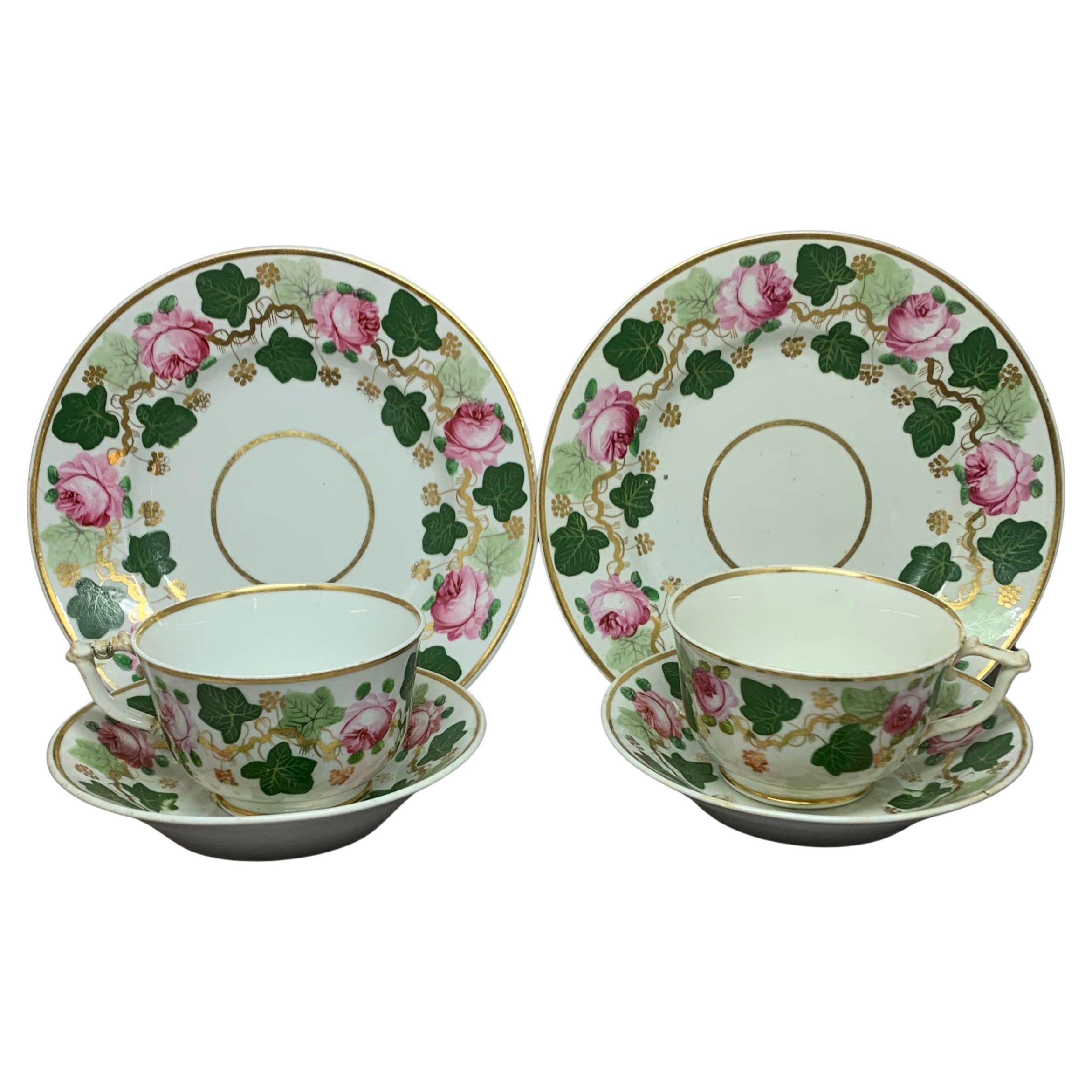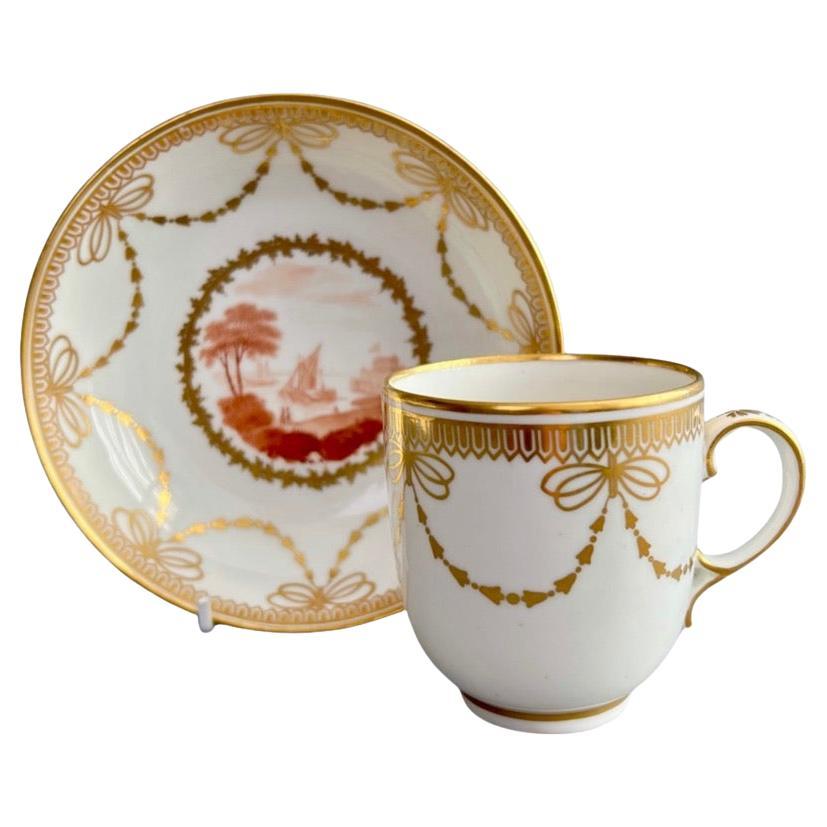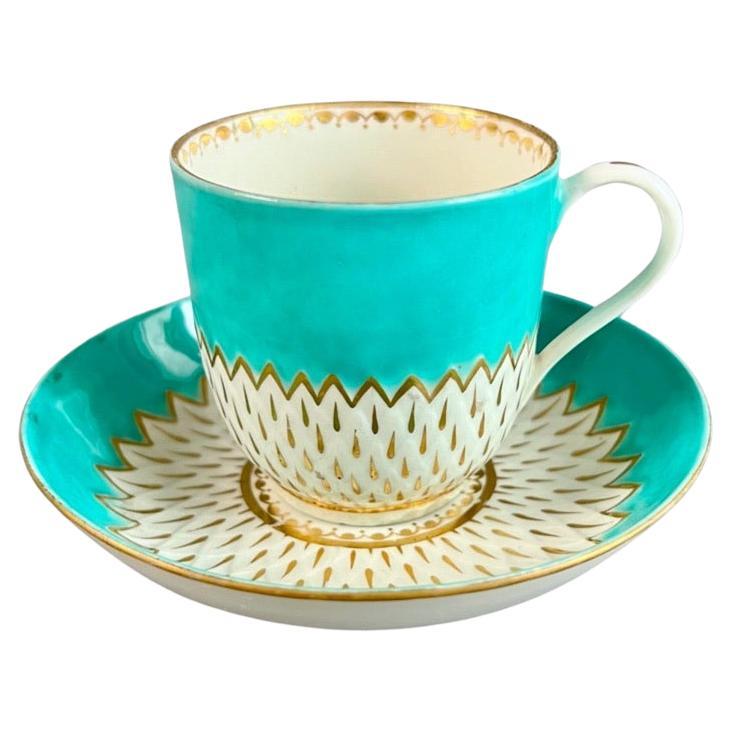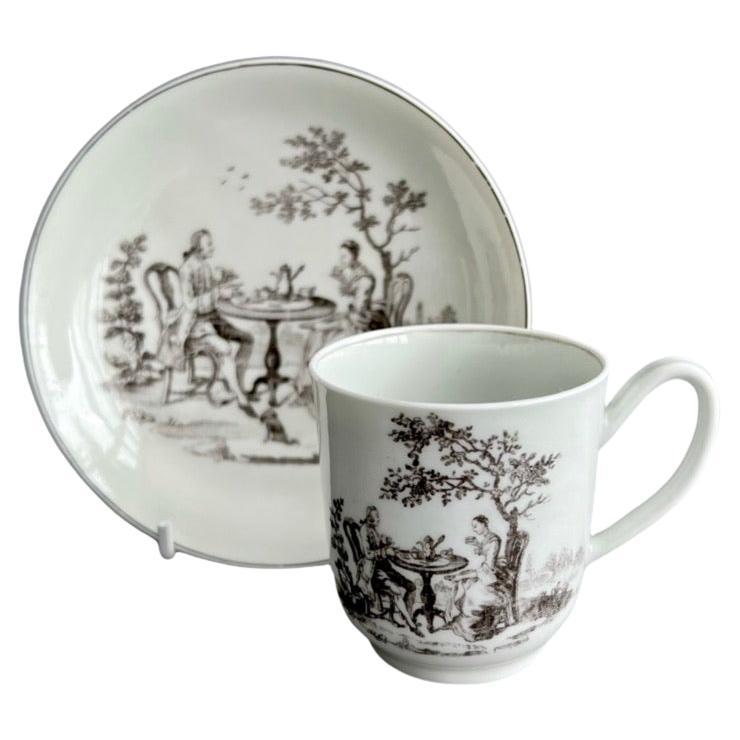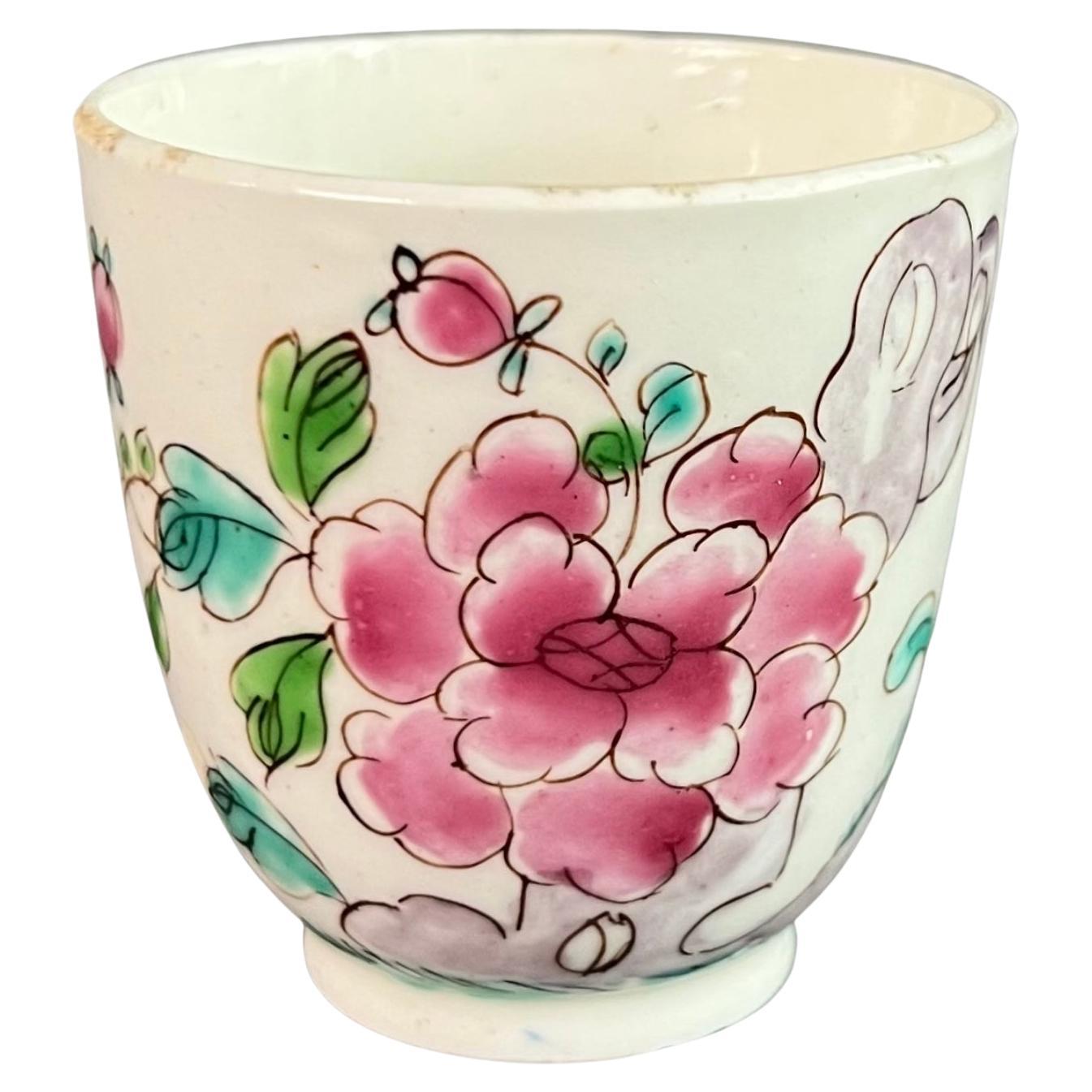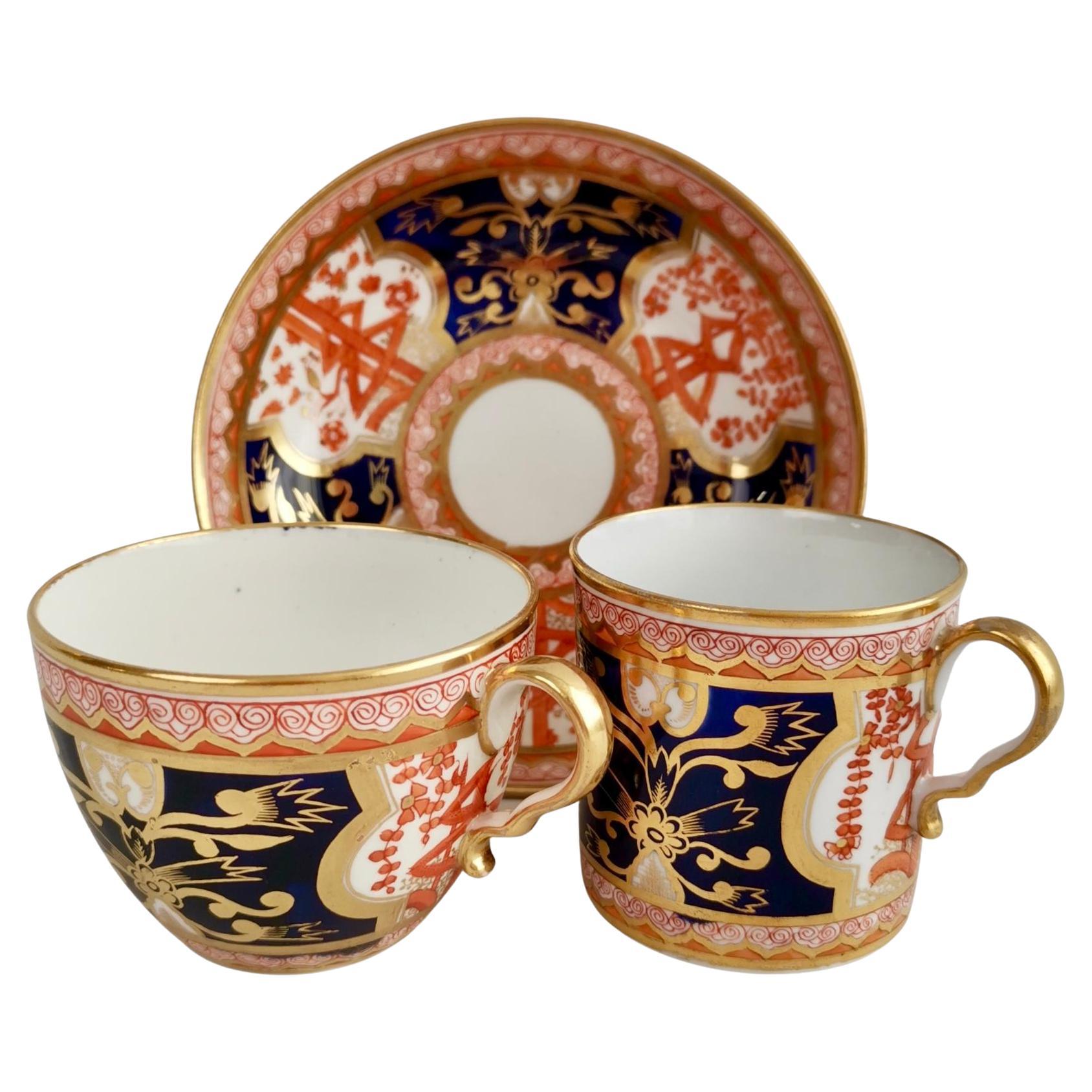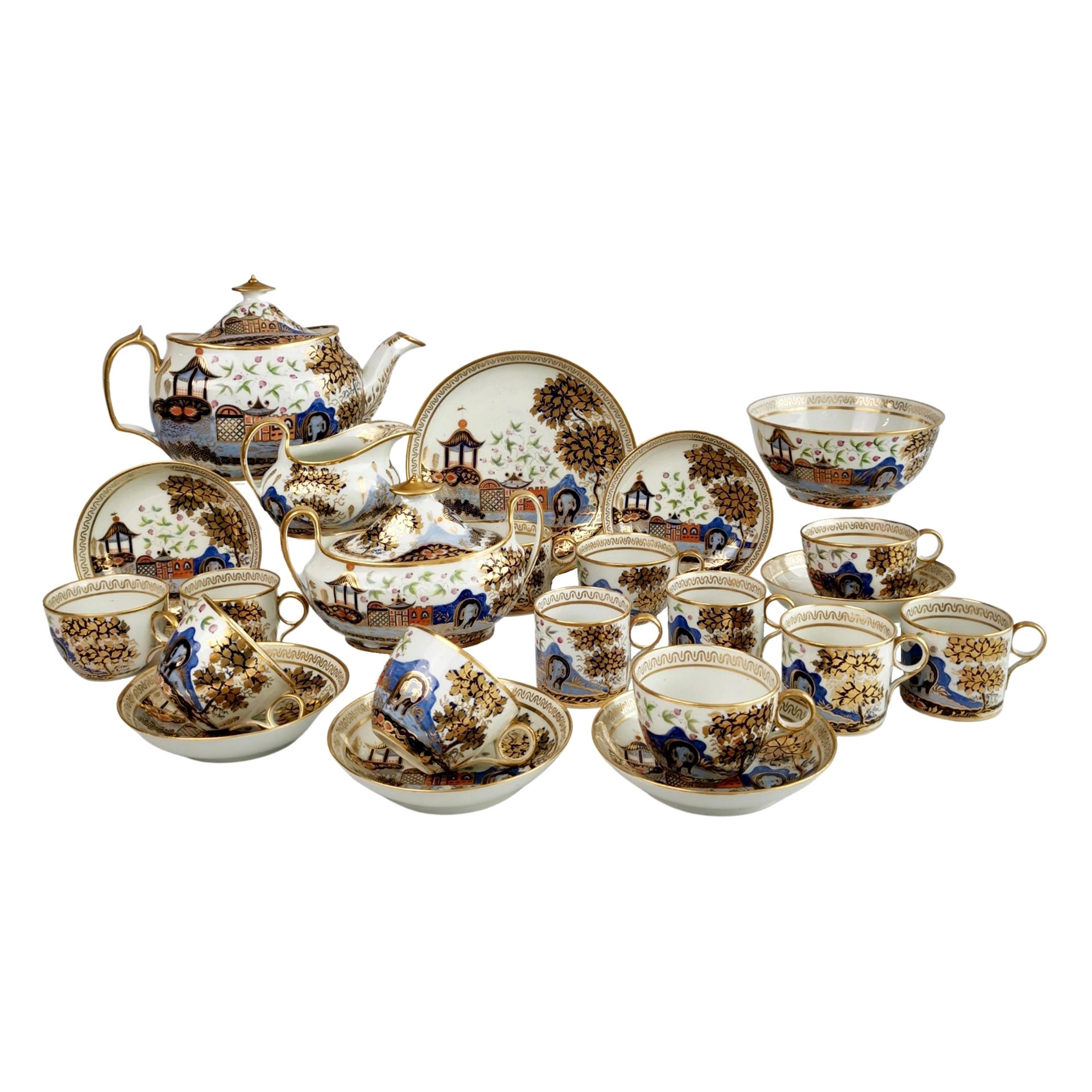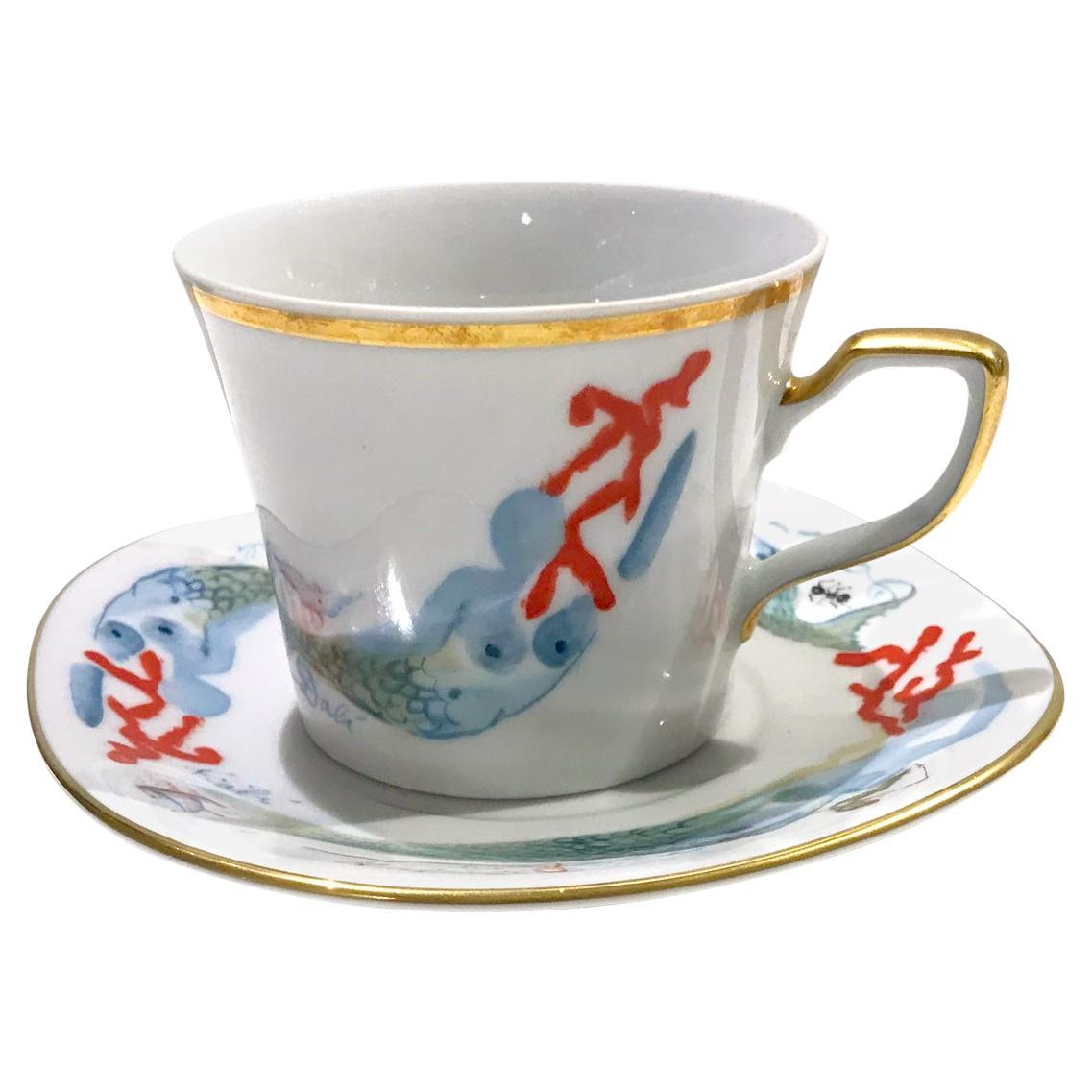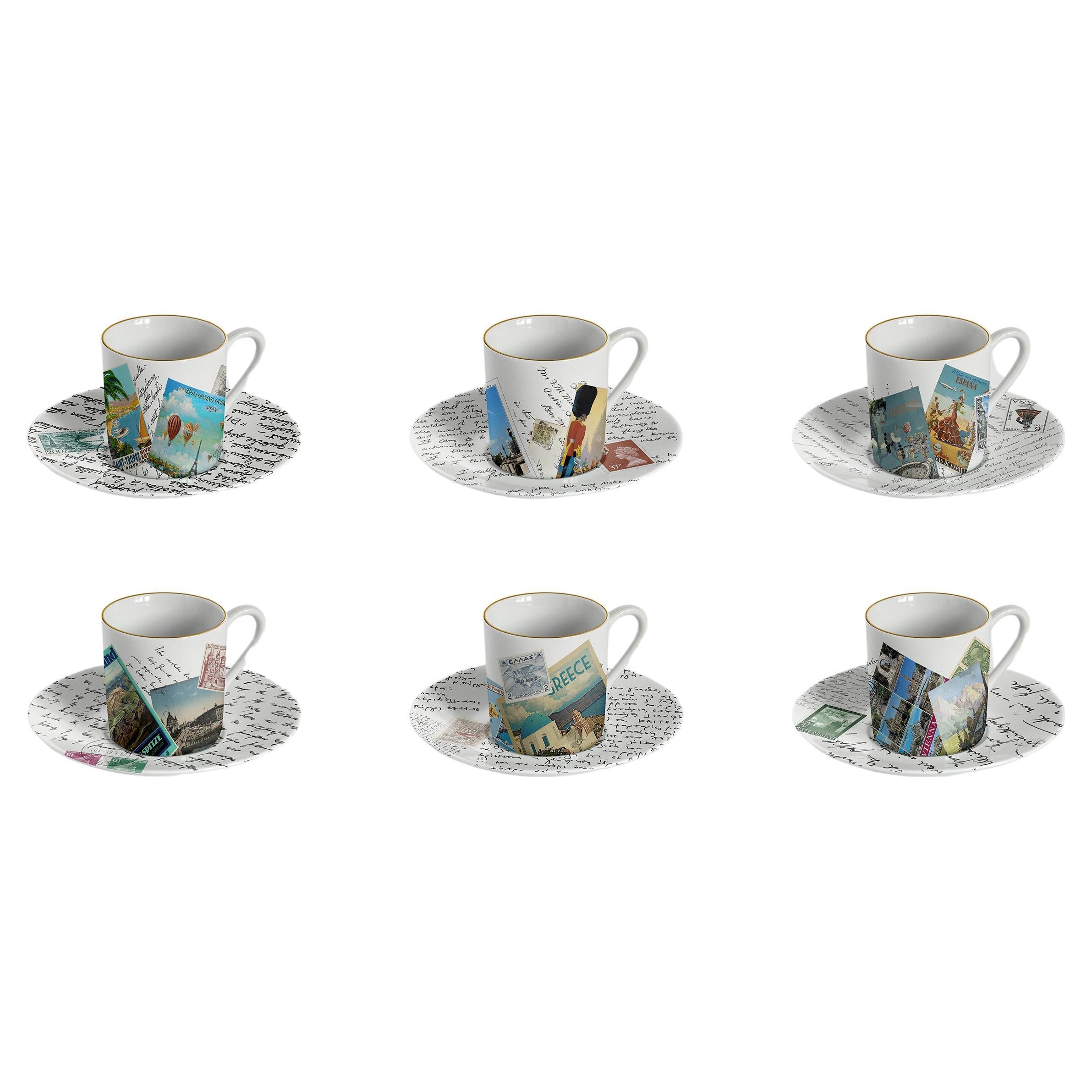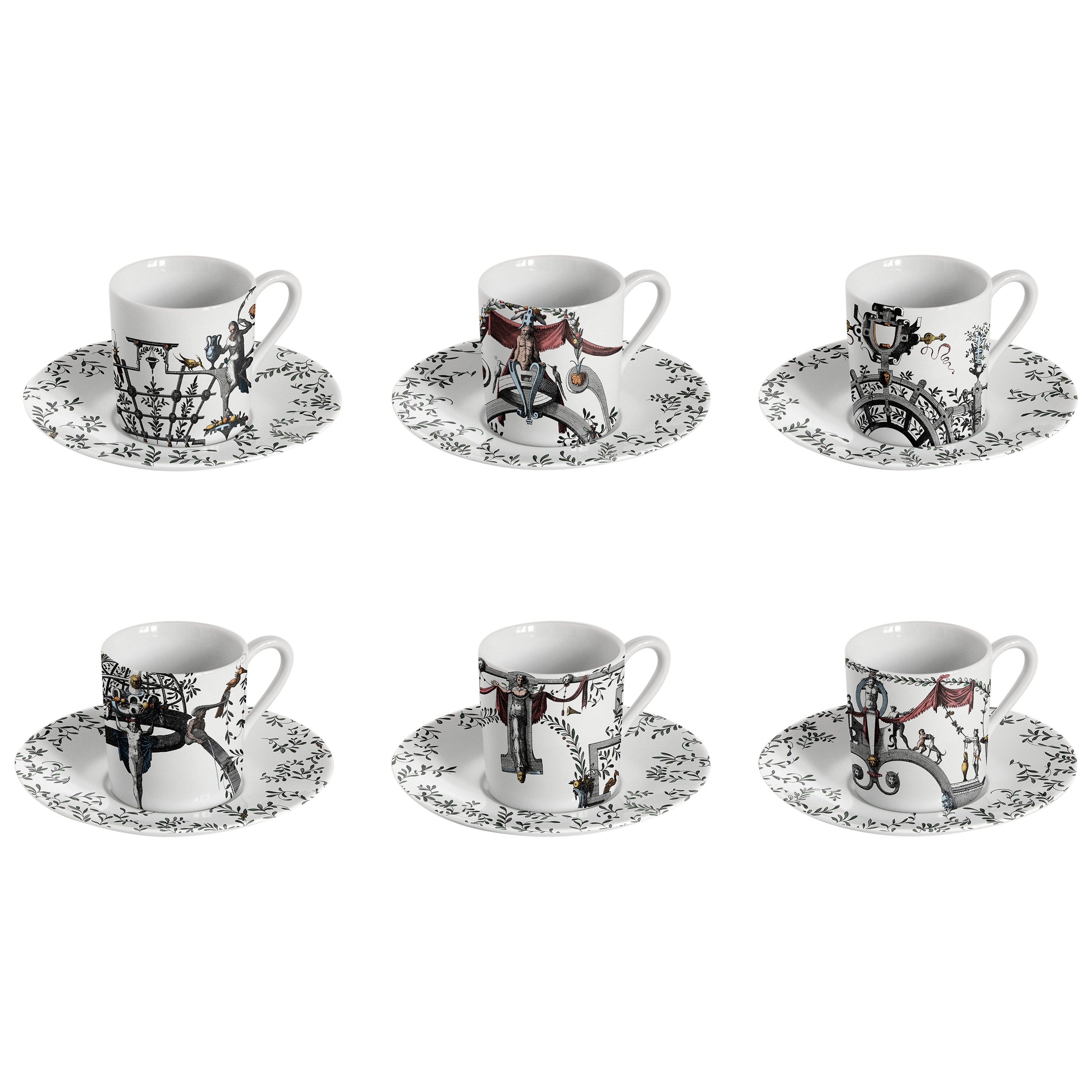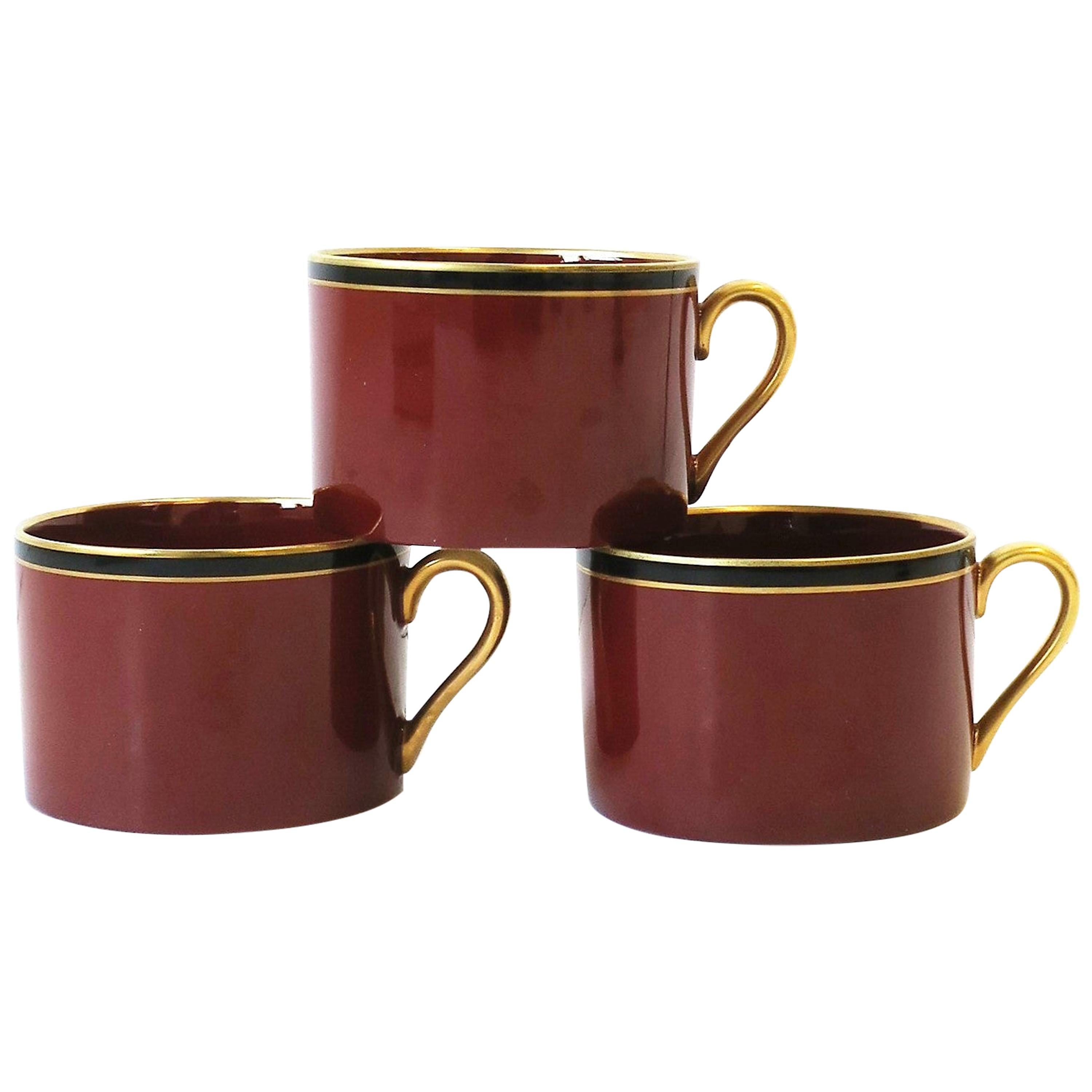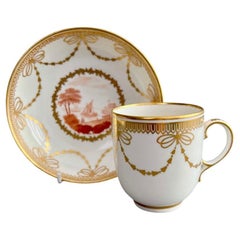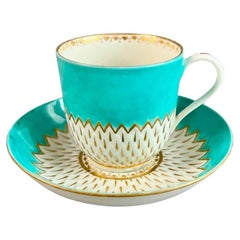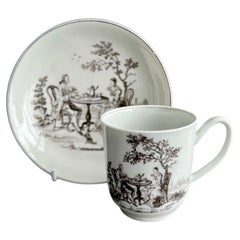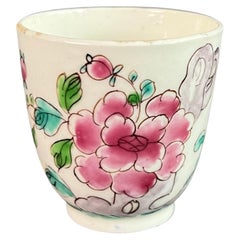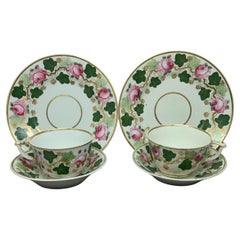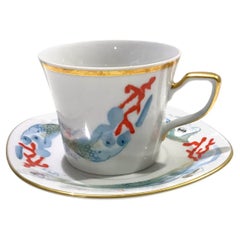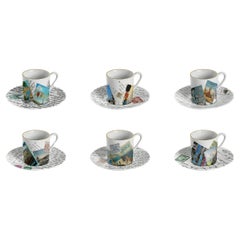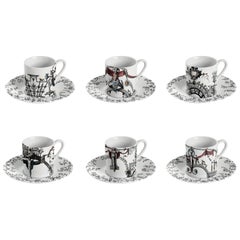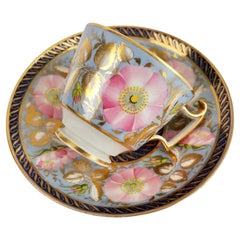
Anstice Horton & Rose Coffee Cup, Periwinkle and Pink Roses, Regency ca 1812
View Similar Items
Want more images or videos?
Request additional images or videos from the seller
1 of 16
Anstice Horton & Rose Coffee Cup, Periwinkle and Pink Roses, Regency ca 1812
About the Item
- Creator:Thomas Rose (Maker),Coalport Porcelain (Maker)
- Dimensions:Height: 1 in (2.54 cm)Width: 1 in (2.54 cm)Length: 1 in (2.54 cm)
- Sold As:Set of 2
- Style:Regency (Of the Period)
- Materials and Techniques:
- Place of Origin:
- Period:
- Date of Manufacture:circa 1812
- Condition:Wear consistent with age and use. In very good condition without any damage, crazing or repairs. There is some wear in the well of the saucer.
- Seller Location:London, GB
- Reference Number:Seller: A-COA2581stDibs: LU4805125447802
About the Seller
5.0
Gold Seller
Premium sellers maintaining a 4.3+ rating and 24-hour response times
Established in 2016
1stDibs seller since 2019
225 sales on 1stDibs
Typical response time: 2 hours
Authenticity Guarantee
In the unlikely event there’s an issue with an item’s authenticity, contact us within 1 year for a full refund. DetailsMoney-Back Guarantee
If your item is not as described, is damaged in transit, or does not arrive, contact us within 7 days for a full refund. Details24-Hour Cancellation
You have a 24-hour grace period in which to reconsider your purchase, with no questions asked.Vetted Professional Sellers
Our world-class sellers must adhere to strict standards for service and quality, maintaining the integrity of our listings.Price-Match Guarantee
If you find that a seller listed the same item for a lower price elsewhere, we’ll match it.Trusted Global Delivery
Our best-in-class carrier network provides specialized shipping options worldwide, including custom delivery.More From This Seller
View AllDerby Coffee Cup, Monochrome Sepia Landscapes Zachariah Boreman, ca 1785
By Crown Derby, Derby
Located in London, GB
This is a very rare and stunning coffee cup and saucer made by Derby in about 1785. The set has a white ground with graceful gilding, and two stunning little landscapes painted by Za...
Category
Antique 1780s English Romantic Tea Sets
Materials
Porcelain
Derby Porcelain Coffee Cup, Artichoke Pattern in Turquoise, Georgian ca 1785
By Derby
Located in London, GB
This is a beautiful coffee cup and saucer made by Derby in about 1785. The set has the distinctive "artichoke" moulding and a bright turquoise ground with the white artichoke surface...
Category
Antique 1780s English George III Tea Sets
Materials
Porcelain
Worcester Coffee Cup, Monochrome Black Print "Tea Party no.3", Georgian ca 1760
By 1st Period Worcester Dr. Wall
Located in London, GB
This is a very charming coffee cup and saucer made by Worcester in their First Period (sometimes called the Dr Wall Period) in about 1760. The items are decorated in a black overglaz...
Category
Antique 1760s English George III Porcelain
Materials
Porcelain
$590 / set
Free Shipping
Bow Porcelain Orphaned Coffee Cup, Famille Rose Peony, circa 1755
By Bow Porcelain
Located in London, GB
This is a very charming orphaned coffee cup made by the Bow Porcelain factory in about 1755. The cup is decorated in a Chinese "famille rose" peony pattern. This cup would have been part of a large tea service, and the tiny size shows how expensive coffee was in the 18th Century.
The Bow Porcelain Factory was one of the first potteries in Britain to make soft paste porcelain, and most probably the very first to use bone ash, which later got perfected by Josiah Spode to what is now the universally used "bone china". Bow was the main competitor of the Chelsea Porcelain Factory, but where Chelsea made very fine slipcast porcelain, Bow made a different soft paste porcelain that tended to be softer and could be pressed into moulds. Bow served a larger public generally at lower prices. The factory was only in operation between 1743 and 1774, after which the tradition got incorporated into some of the later famous potteries such as Worcester and Derby.
The cup is unmarked, which is normal for Bow items of this era.
Condition report the cup is in excellent condition without any damage or repairs. There are various glazing imperfections, which are quite normal for porcelain of this era.
Antique British porcelain...
Category
Antique 1750s English Rococo Tea Sets
Materials
Porcelain
Flight & Barr Solitaire Cabaret Tea Set, Pink and Gilt, Neoclassical ca 1800
By Flight & Barr Worcester
Located in London, GB
This is a very rare and stunning cabaret "solitaire" tea set, serving one. The set was made by the Flight & Barr factory in Worcester between 1792 and 1804, and it consists of a larg...
Category
Antique Early 1800s English Regency Porcelain
Materials
Porcelain
$3,500 / set
Free Shipping
Spode Porcelain Teacup Trio, Red Imari Dollar Pattern, Regency, ca 1810
By Spode
Located in London, GB
This is a beautiful orphaned teacup made by Spode in about 1810. It bears a lavish Japanese-inspired Imari pattern.
Spode was the great pioneer among the Georgian potters in England. Around the year 1800 he perfected the bone china recipe that has been used by British potters ever since, and he was also the leading potter behind the technique of transferware, making it possible for English potters to replace the Chinese export china, which had come to an end around that time, with their own designs. This was fundamental to a thriving industry that would last for about 150 years and provide half the world with their tableware. Spode porcelain is regarded as one of the highest quality porcelains around; for a soft-paste porcelain it is surprisingly hard and fine, and has a wonderful bright white colour.
The pattern on this can is called "Dollar" pattern, a very famous pattern that was used by English potters in the 18th and early 19th Century. It is obvious why it is called “dollar” - but its origin is less obvious! It is thought that this pattern was derived from a very old Chinese pattern depicting a tree with elaborate foliage that hides a Chinese character representing longevity or happiness. Traditionally, this went with a an image called “Taotie”, which was used on very ancient bronze vases...
Category
Antique Early 1800s English Regency Porcelain
Materials
Porcelain
You May Also Like
Pair Green Pink and Gilt Grape Leaf and Rose Cups and Saucers
By Royal Crown Derby Porcelain
Located in New York, NY
Pair green pink and gilt grape leaf and rose cups and saucers. Pair antique Derby porcelain breakfast or tea sets in vibrant green and soft pink with gilt vin...
Category
Antique Early 19th Century English Tea Sets
Materials
Porcelain
Porcelain Coffee Cup and Saucer "Sirenas" Designed by Dalí, N°520/1000
By Salvador Dalí
Located in Paris, FR
Wonderful Porcelain Coffee cup and saucer "Sirenas peinadas con coral and hormiga" by Salvador Dalí. The famous surrealist artist created this model in 1977 with mermaids, red vivid corals and small ants on a white background. Each piece has a gold rim on the edges giving a very luxurious aspect.
Limited edition made of German porcelain produced by the Manufactory Schirnding...
Category
Late 20th Century German Porcelain
Materials
Porcelain
$351 Sale Price / item
20% Off
Corrispondenze, Six Contemporary Decorated Coffee Cups with Plates
By Vito Nesta
Located in Milano, Lombardia
Vito Nesta Grand Tour's "Corrispondenze" collection is a portrait of what we carry with us after every journey we make in the world. Images, colo...
Category
2010s Italian Porcelain
Materials
Porcelain
Pompei, Six Contemporary Decorated Coffee Cups with Plates
By Vito Nesta
Located in Milano, Lombardia
The porcelain collection Pompei by Grand Tour By Vito Nesta brings the Grottesche wall decoration back to life in a contemporary key. Ancient designs are taken and declined on the di...
Category
2010s Italian Porcelain
Materials
Porcelain
Red Burgundy, Gold and Black Porcelain Coffee or Tea Cups, Set of 3, 1967
Located in New York, NY
A chic set of three (3) vintage red burgundy, gold, and black porcelain coffee or tea cups, Mid-20th century, 1967.
Side tables shown in image search 1s...
Category
Vintage 1970s Japanese Modern Porcelain
Materials
Porcelain
$380 Sale Price / set
20% Off
Richard Ginori Italian Porcelain Espresso Coffee Tea Cup Saucer
By Richard Ginori
Located in New York, NY
A beautiful vintage Italian porcelain espresso coffee or tea demitasse cup and saucer 'Toscana' by designer Richard Ginori, circa mid-20th century, ...
Category
Mid-20th Century Italian Country Porcelain
Materials
Ceramic, Porcelain
Recently Viewed
View AllMore Ways To Browse
Original Teak Noguchi Coffee Table
Orrery Clock
Orsenigo Furniture On Sale
Ortiz De Zarate
Orville Bulman
Osborne Gold China
Oscar Lakeman
Otar Art Deco Cigarette Box
Otto Ostbjerg
Oumar Bocoum
Outdoor 60 Square Dining Table
Outdoor Furniture Mckinnon And Harris
Oval Astro Table
Oval Chestnut Farm Table
Oversized Draft Table
Owl Censer
Owl Doorstop
P Granchi
